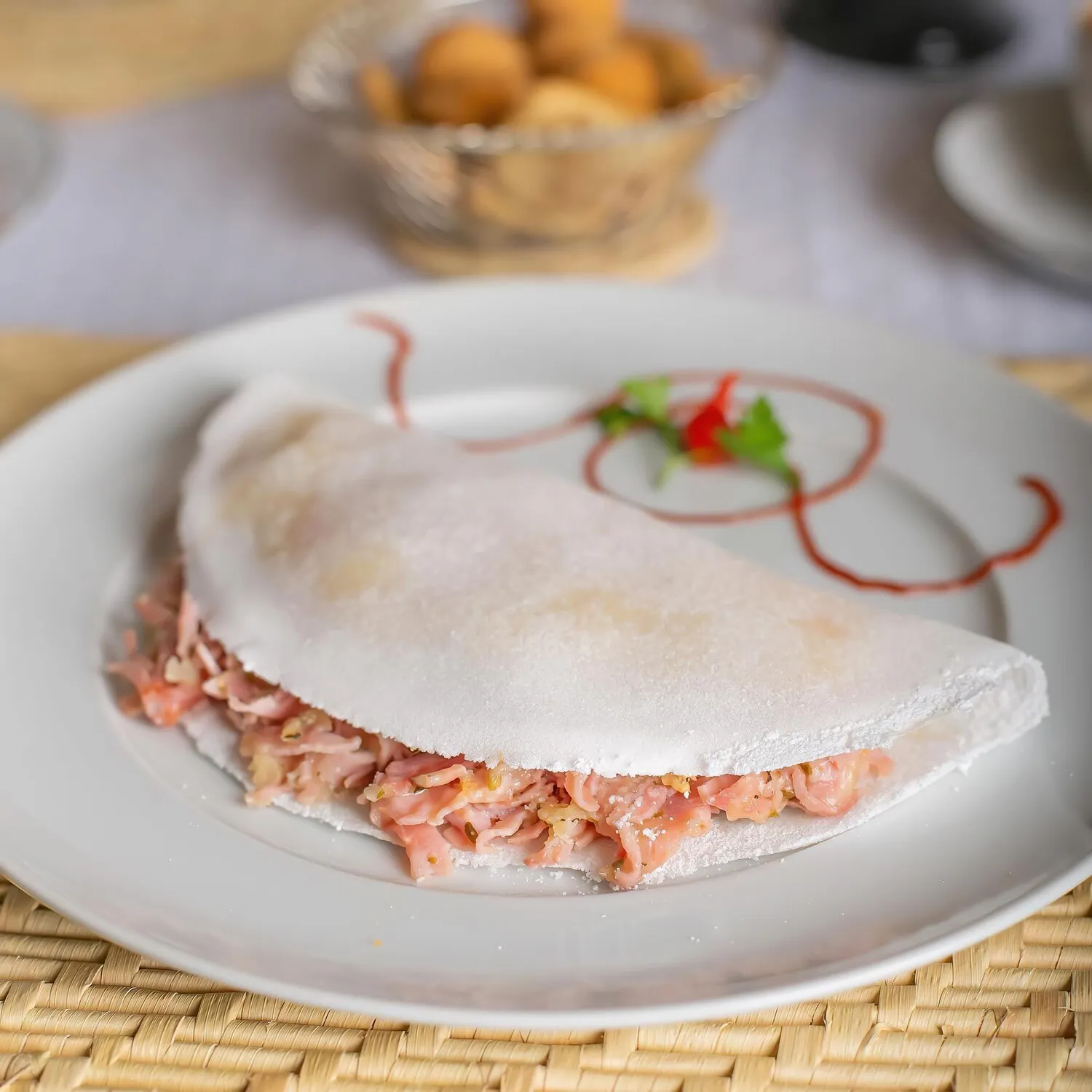
Tapioca
Varied tapioca options
Nutrition Facts
* The % Daily Value (DV) tells you how much a nutrient in a serving of food contributes to a daily diet. 2,000 calories a day is used for general nutrition advice.
Superperto Gourmet
Tapioca's history is intertwined with the indigenous peoples of Brazil who first cultivated and processed cassava. It served as a staple food long before European colonization. Portuguese colonizers adopted it and spread its use, recognizing its versatility and resilience. From Brazil, tapioca expanded to other parts of South America and eventually to Asia and Africa through trade and colonial influence. Its ability to thrive in various climates solidified its global presence.
Tapioca holds significant cultural importance, particularly in Brazil, where it is a versatile and affordable staple food deeply rooted in tradition. It reflects indigenous culinary heritage and adaptation to local resources.
Brazilian Staple
In Brazil, tapioca crepes ('beiju' or 'tapioca') are a common street food, breakfast item, and snack. They are highly customizable, filled with various sweet and savory ingredients. It's considered a quick and easy meal, often enjoyed as a healthier alternative to bread.
Indigenous Heritage
Tapioca represents the ingenuity of indigenous communities in utilizing cassava, a native plant. The process of extracting starch from cassava and transforming it into tapioca flour or pearls is a testament to their sustainable food practices.
Regional Variations
Different regions in Brazil have their own unique tapioca preparations. For example, in the Northeast, 'cuscuz de tapioca' is a popular dish made with tapioca pearls, coconut milk, and sugar, while in other areas, savory fillings like carne seca (dried beef) are preferred.
Tapioca's inherent flavor is quite neutral, lending itself perfectly to both sweet and savory applications. The flavors depend heavily on the added ingredients and preparation method.
The pure tapioca itself has a very mild, slightly earthy taste. When prepared as a pudding or dessert, common flavors include coconut milk, sugar, vanilla, fruits (mango, passionfruit, strawberries), and chocolate. Savory tapioca can incorporate cheese (queijo coalho is popular in Brazil), herbs, spices, vegetables, and meats. The texture, whether chewy, creamy, or crispy, also significantly influences the perceived flavor.
Hydration is Key
For tapioca pearls, proper hydration is crucial. Soaking them in water until translucent ensures they cook evenly and achieve a chewy texture. Avoid over-soaking, which can make them mushy.
Non-Stick Pan
When making tapioca crepes, use a good quality non-stick pan. This prevents the tapioca from sticking and makes it easier to flip and cook evenly. A well-seasoned cast iron skillet can also work well.
Even Cooking
Cook tapioca pearls over medium-low heat to prevent scorching. Stir frequently to ensure even cooking and prevent sticking to the bottom of the pot. For crepes, use medium heat and cook until the edges start to lift.
Adding Flavor
Don't be afraid to experiment with flavors! Tapioca is a blank canvas. Infuse the cooking water or liquid with spices like cinnamon or cardamom for a subtle aroma, or add extracts like vanilla or almond for a richer taste.
Explore additional Brazilian dishes and restaurants
Explore BrazilianDiscover top dining spots and culinary experiences in Natal.
Explore NatalLearn more about the food culture, restaurant scene, and culinary heritage of Brazil.
Explore Brazil